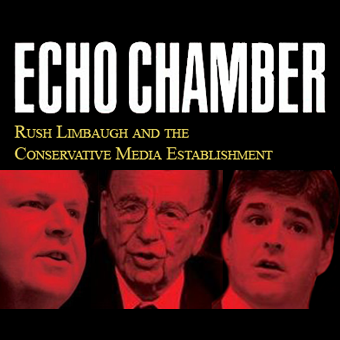 Rupert Murdoch’s recent multibillion-dollar purchase of the Wall Street Journal made international news. Yet it is but one more chapter in an untold story: the rise of an integrated conservative media machine that all began with Rush Limbaugh in the 1980s. Now Kathleen Hall Jamieson and Joseph Cappella—two of the nation’s foremost experts on politics and communications—offer a searching analysis of the conservative media establishment, from talk radio to Fox News to the editorial page of the Wall Street Journal. Indeed, here is the first serious account of how the conservative media arose, what it consists of, and how it operates. This thoughtful study offers the most authoritative and insightful account of this revolutionary phenomenon available today.
Rupert Murdoch’s recent multibillion-dollar purchase of the Wall Street Journal made international news. Yet it is but one more chapter in an untold story: the rise of an integrated conservative media machine that all began with Rush Limbaugh in the 1980s. Now Kathleen Hall Jamieson and Joseph Cappella—two of the nation’s foremost experts on politics and communications—offer a searching analysis of the conservative media establishment, from talk radio to Fox News to the editorial page of the Wall Street Journal. Indeed, here is the first serious account of how the conservative media arose, what it consists of, and how it operates. This thoughtful study offers the most authoritative and insightful account of this revolutionary phenomenon available today.
Get The Echo Chamber. Available now from Oxford University Press.
Supplemental Material
For readers of Echo Chamber
How to use this web site
- Any reference in Echo Chamber to appendix material will be found here
- Appendices 1-14 parallel the 14 chapters of Echo Chamber
- Materials within each appendix are organized in sequence with their appearance in each chapter of Echo Chamber
- Use the chapter number and page number of citations in Echo Chamber to find specific appendix material
- Use the chapter and page number along with the Table of Contents for the Appendices (TOCA), below, to locate the specific supporting material
- TOCA lists every chapter and page number from Echo Chamber where appendix material is offered
Table of Contents for Appendices
Echo Chamber: Rush Limbaugh and the Conservative Media Establishment
| Chapter | Brief Description | Appendix |
| 1 | How the Conservative Opinion Media Attack the Democratic Opposition | App1-4.pdf |
| 2 | How the Conservative Opinion Media Defend Conservatism | |
| 3 | Conservative Opinion Media: The Players | |
| 4 | The Conservative Opinion Media as Opponents of Liberalism | |
| 5 | Effects of an Echo Chamber
| App_5.pdf |
| 6 | Speaking to the Republican Base
| App_6.pdf |
| 7 | Vetting Candidates for Office
| App_7.pdf |
| 8 | Stirring Emotion to Mobilize Engagement
| App_8.pdf |
| 9 | Framing and Reframing the Mainstream Media | None |
| 10 | Engendering Distrust of Mainstream Media
| App_10.pdf |
| 11 | Defending an Insular Interpretive Community | None |
| 12 | Balkanization of Knowledge and Interpretation
| App_12.pdf |
| 13 | Distort and Polarize
| App_13.pdf |
| 14 | Conclusion | None |
| Additional Materials | ||
| Data, Reports, and Codebooks for the 1996 PTR Experiment | Link | |
| Data, Reports, and Codebooks for the 1996 PTR Survey | Link | |


